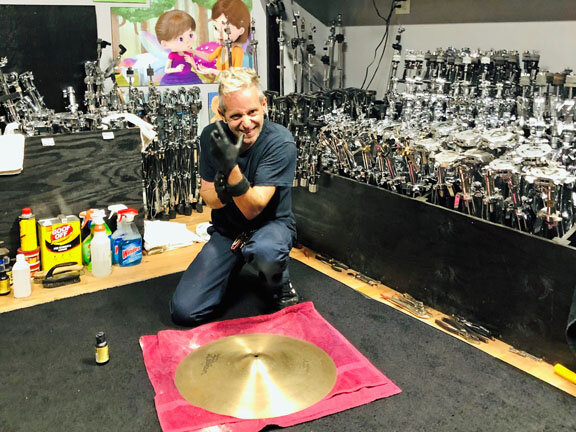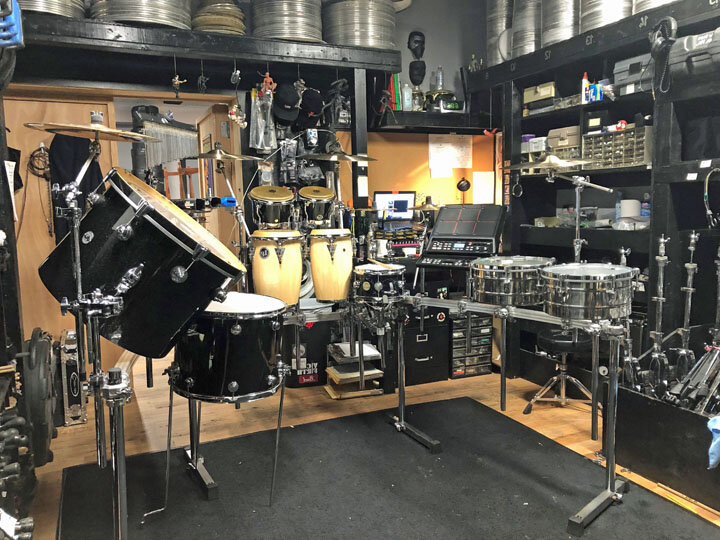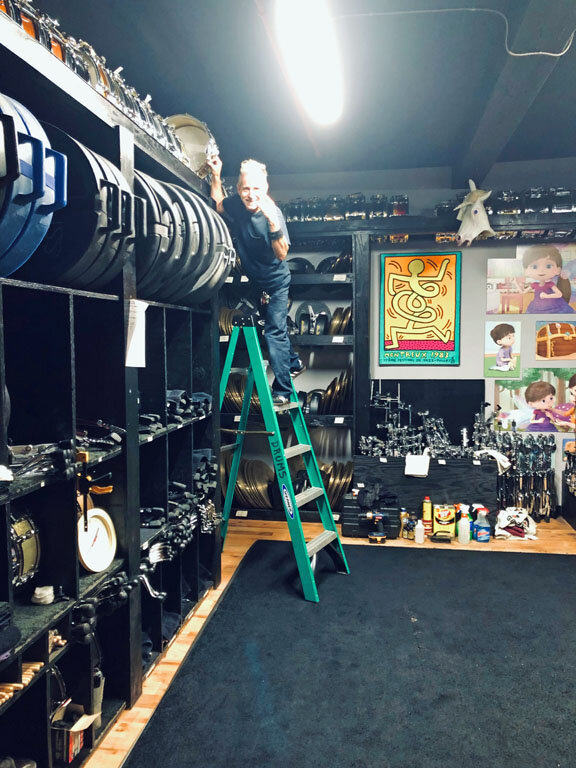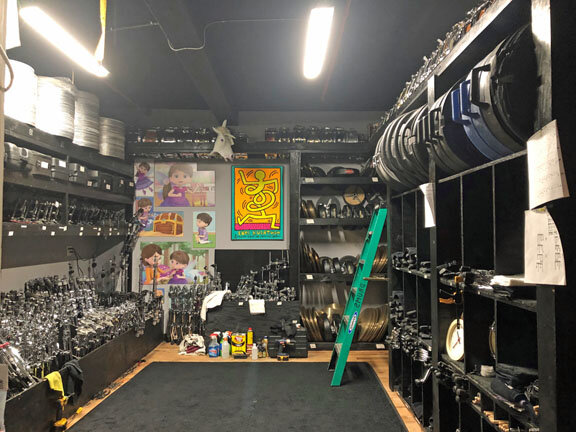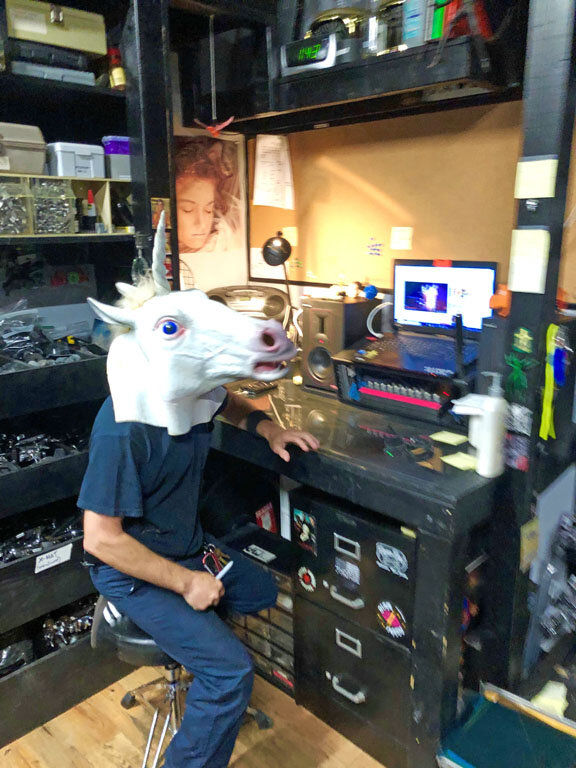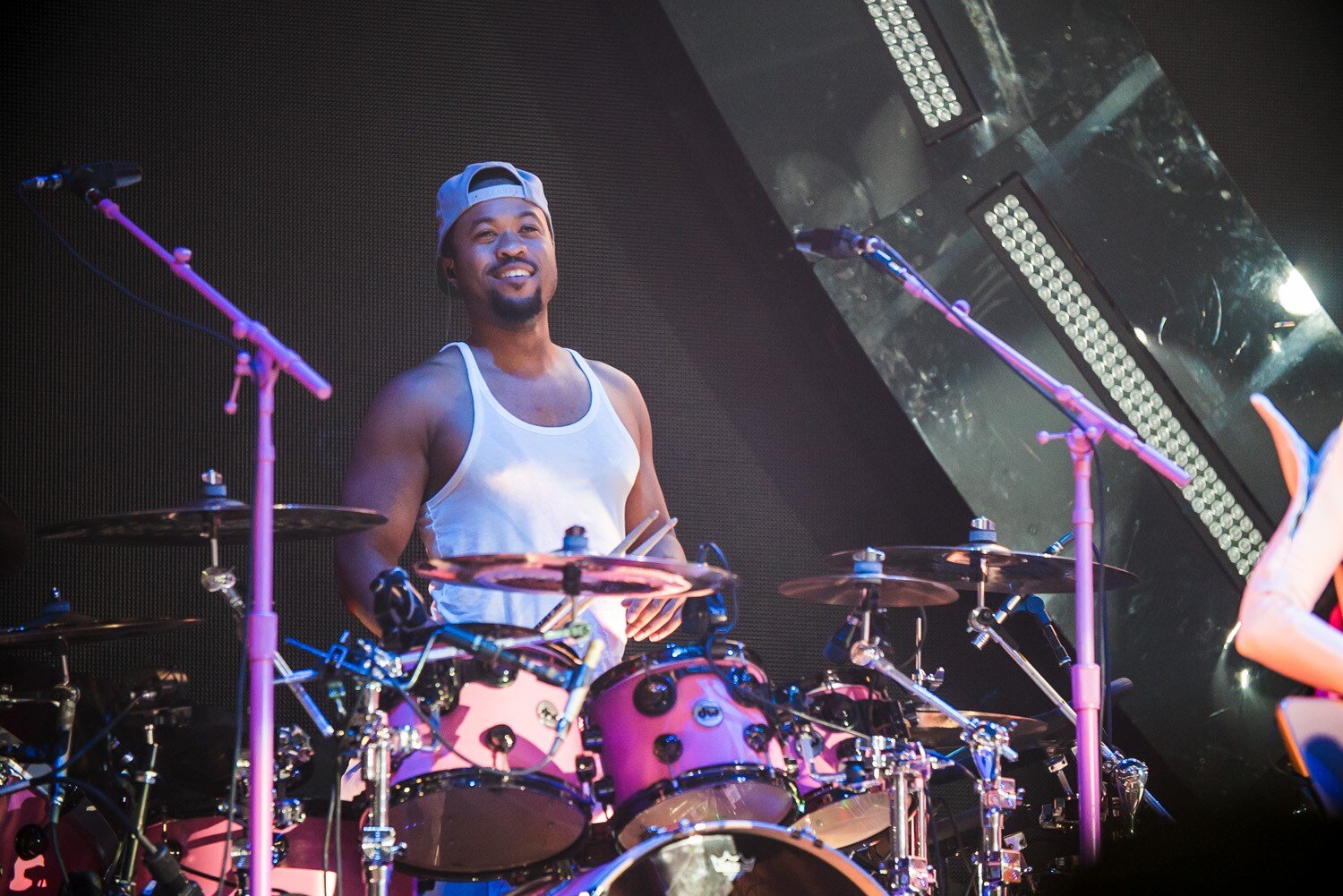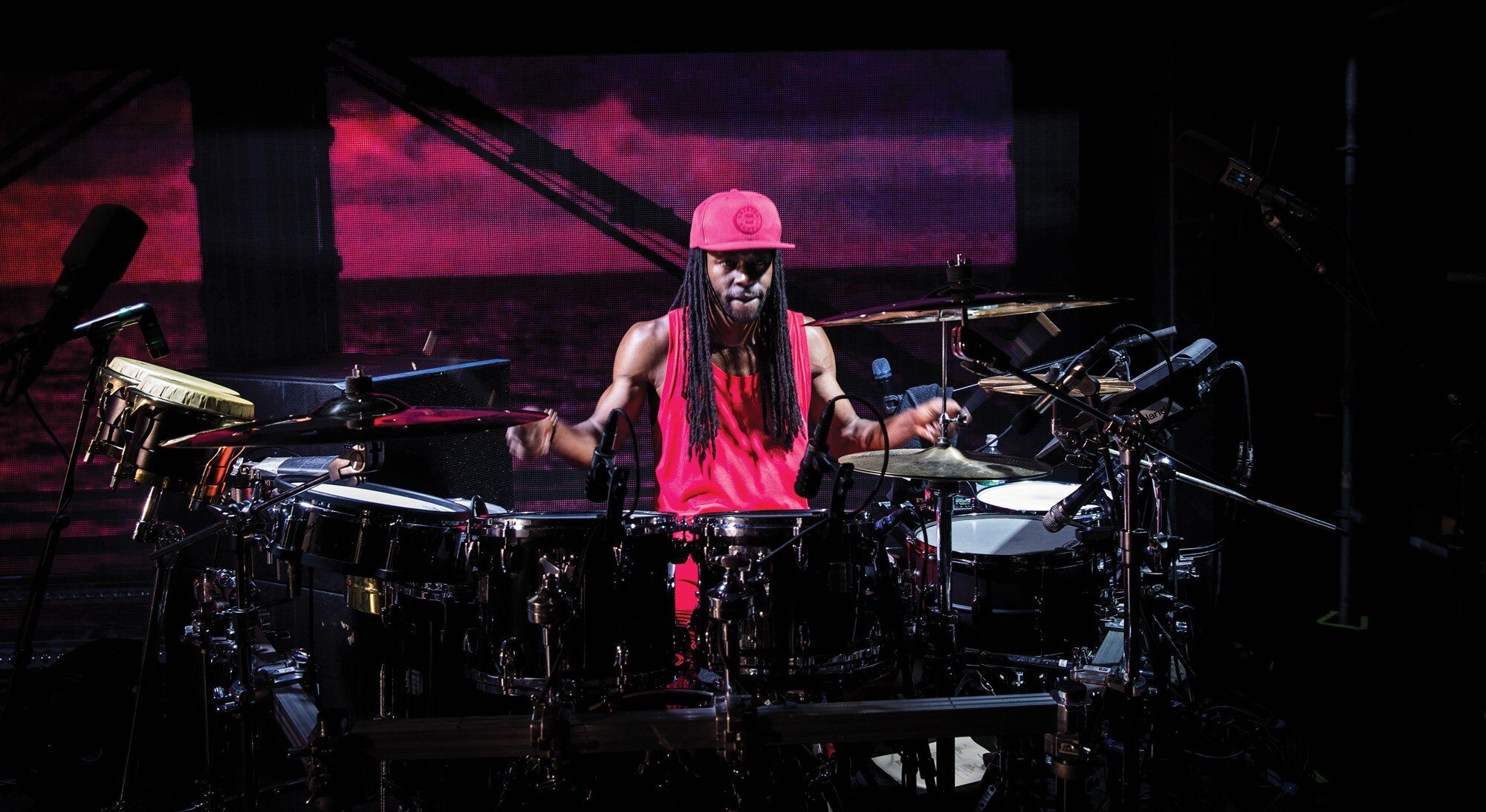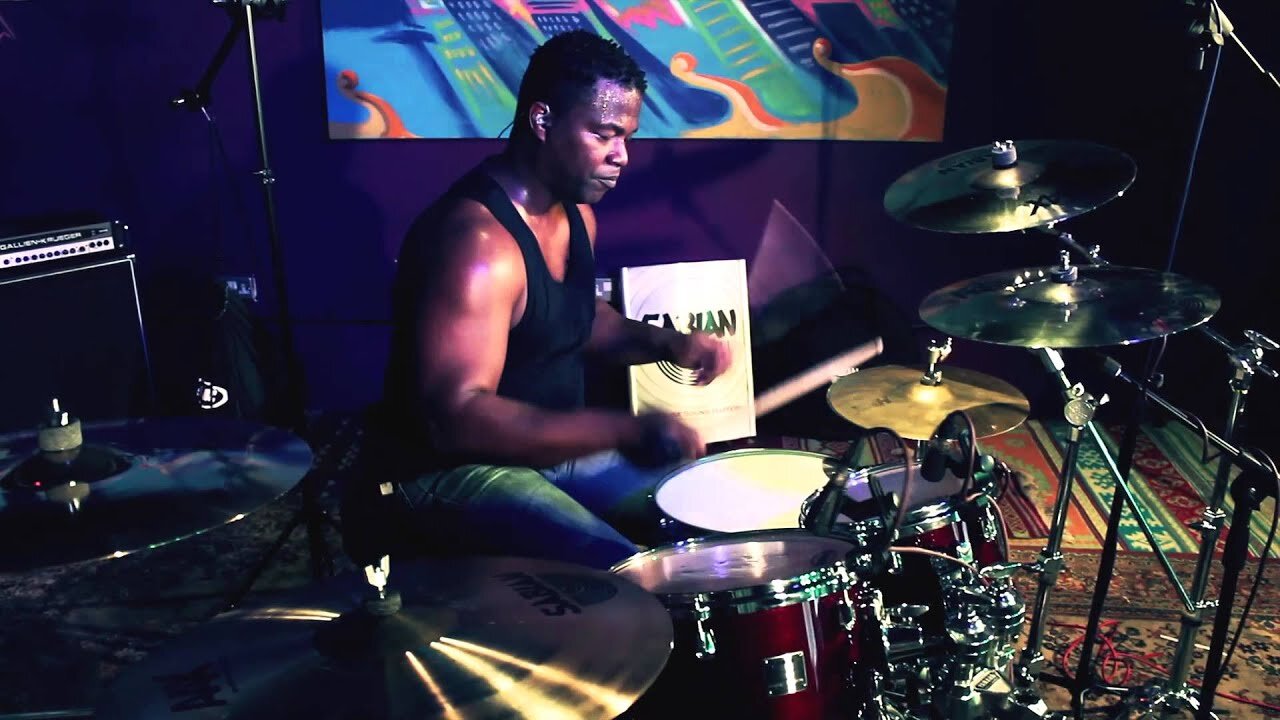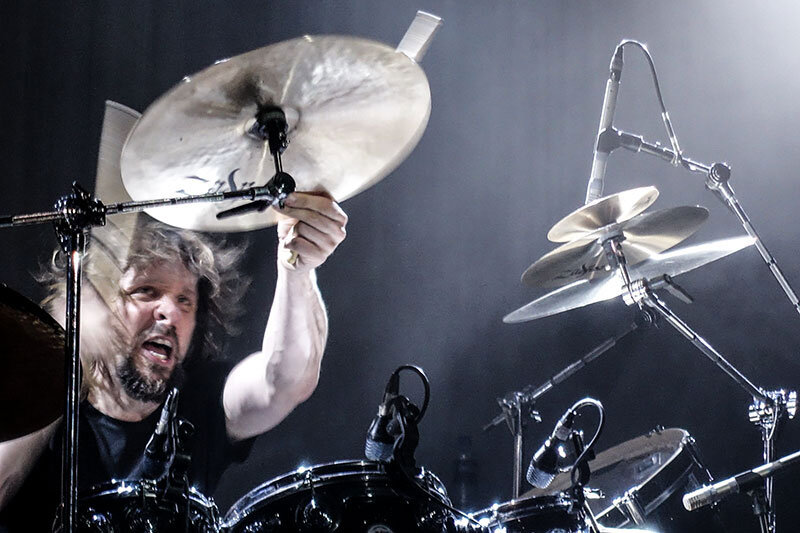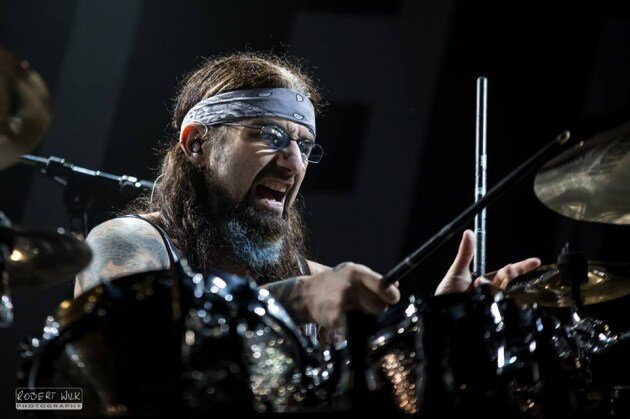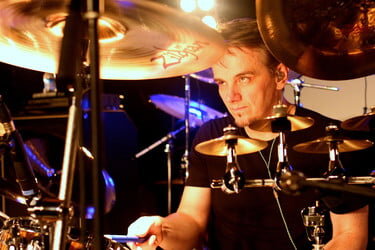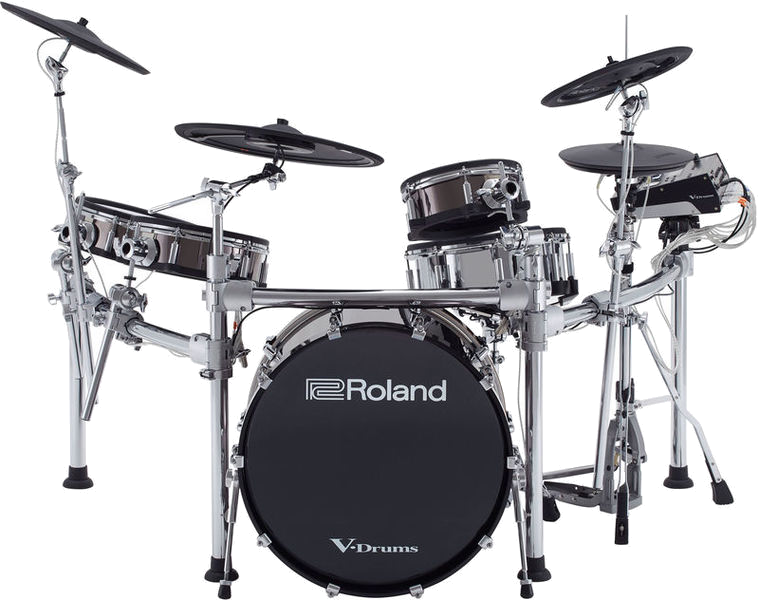IN THE YEAR 2006, I WAS A TOURING DRUMMER.
I’d been playing with various bands on North American and European tours since 1993. Chemlab, KMFDM, and 16Volt. Another guy I drummed for was a guitarist named Daniel Ash of Love and Rockets. At some point, Daniel decided to do a reunion tour with Bauhaus to play the Coachella music festival at Palm Springs in the desert. He needed a drum tech and he asked me if I could help him with that. I said, “Of course I'll do it. I'd be honored.” So that’s how I fell into this career I have now as a drum technician.
By 2006, it was time to get off the road. My son was living with me in Jersey City, I’d moved here from Hollywood to be with him and I didn’t want to tour anymore. That's when I started calling around to various backline companies. I needed a job where I could tech drums without going on tour—a job that would allow me to go home every night. I called every backline company and music store in the New York area, including Mike McCann at SST. As it happened, SST had just lost their drum tech. My apartment was only a few minutes from SST in Weehawken, so it worked out perfectly.
I was looking at a big pay cut from my work on the road, but I was grateful for the opportunity. Working for SST would allow me to be with my son, to be a dad to him, yet still be involved in drums. Working in the business right outside New York would be great, too. So, I took the job and took over SST’s drum shop.
OCD: Obsessive-Compulsive Drummer
My boss, John Hanti, says I'm obsessive-compulsive about keeping track of our inventory, logging rentals in and out, keeping track of the numbers and so forth, and he’s right.
Yea, I’m a little OCD, but I think that’s a positive thing. I’m dealing with maybe twenty manufacturers with different types of hardware and drumheads and pedals and drums and electronic drums and everything’s gotta be in its place. It helps me to drum tech more efficiently. It helps me find what our clients need more quickly, and that saves them time. More importantly, it gives them peace-of-mind. I think that’s what we really offer our clients. All backline companies rent gear. But not all of them offer peace-of-mind with their rentals as we do.
I clean everything before it goes out. I tune every drum, depending on what the rider says and what type of music it is. I go on YouTube to look up every band I get a rider from. I check out what type of music they play. If they don't specify what they want. I’ll select the type of kit, the type of heads, and the type of tuning my experience tells me they need for their genre.
Fixing a Pedal
We've had everybody through SST, drumming-wise. It's been a dream for me. I'm teching for Marco Minnemann, one of my all-time favorites. Oh, my goodness! Mike Portnoy from Dream Theater. Tommy Clufetos with Black Sabbath. Mike Mangini of Dream Theater. Gavin Harrison of Porcupine Tree, Jay-Z’s drummer, Tony Royster, Jr. They are all jaw-dropping drummers.
I’ll sit back behind the drums in the rehearsal room while they’re working and pretend like I'm fixing a pedal just to watch these guys drum. It's unbelievable. And they are all totally sweet guys. It’s like a brotherhood of drummers. Every day I get to see God-given talent, to see the mechanics, to see what it really takes to get to that level.
I asked Tony Royster how he developed his technique and he told me, “I was just born this way. But I practice a lot. It takes hours and hours of practice— eight to ten hours a day.”
Jeff Beck sometimes rehearses at SST and I recently got to talk with him. That was a dream, too. He always has amazing drummers, like Jonathan Joseph.
On SST’s Backline Rental Process
SST has a stringent backline rental process, not only with our drum inventory but with every piece of gear we have. I can speak most directly about the drum shop, of course, but it applies to our whole operation.
Somebody will order a five-piece drum kit and there will be so many variables to consider. They might want specific hardware or specific drum manufacturers. They want these pedals, they want those heads. We're talking 40 to 50 different variations in brand names alone and countless configurations. This is where the OCD thing kicks in.
So, I gather those drums up. Whether the configuration has been completely specified or I have some say in the matter, it doesn’t matter. The process is the same. The whole kit has already been thoroughly checked out when we checked it back in from the last rental. But before I send it out, I check it out again. I make sure all the tension lugs are there, that there are no huge scratches or blemishes, that everything's functional. I check the heads and clean the whole thing. I polish all the hardware, all the lugs. If the client has asked for new heads, I put them on. If not, I still clean the used heads to make sure theirs no dent or dirt to make sure all the heads match--same brand, same type. I make them look like new again. I do this because I care. I want that drummer to open those cases and go “Wow, this is an amazing kit.”
One of the biggest compliments I ever got came from Mike Portnoy. He was doing a gig with Winery Dogs at BB King’s. I spent all night measuring his kit, putting tape marks where his cymbals were, charting everything out. He got to the gig, sat down behind the kit, and started laughing. I'm like, “What? What, what do you need? What’s wrong?”
“Nothing,” he said with the biggest smile. “Nothing’s wrong. This is perfect.”
I see drum kits from other backline companies when we have to sub-run something. I'll look at the kit and think, “They send stuff out like this?” I wouldn't do that. I can't do that.
Maybe that comes from me being a player myself. These artists have got so much other crap to deal with. The last thing they want is a kit that doesn’t work for them. This is their art. We provide the paint and paintbrushes for them to start painting with.
A few months ago, SST purchased a top-of-the-line Roland electronic kit for Jay-Z’s new drummer, Boots Greene, to play on a big gig in New York City. We want every musician to be completely happy, so John Hanti said, “Yes. Get it.” I called up Roland and ordered a kit with the specs the drummer wanted. And he was happy.
Color is important, too. Jay-Z’s band wanted everything to be black. Black drums, black heads, black bongos. We made it happen. You do what you gotta do to make the artist happy. That’s our job.
The iHeart Jingle Ball Tours
The most challenging gigs we’ve done have been the iHeart Jingle Balls tours. It's a challenge every year. You have 30 of the top pop acts in the world going out on tour, playing the U.S. We have 30 different contract riders to work with— information sheets detailing what kind of gear each act wants.
You’ve gotta sift through them meticulously. I chart it all out. This drummer wants these drums in this color with these heads. He wants these cymbals in these sizes. He wants this hardware or that hardware. He wants these sticks.
On top of that, you’ve got to keep in mind that this is for television. It all has to look great, too. I've seen other backline companies stick their logo where it will be seen by the cameras, so the artist will tape right over the sticker because they don't want that on TV. We don’t t do that. You have to think of this stuff. Like the music stands. You’ve gotta paint them flat black, not shiny black. because the light bounces off shiny paint and creates flares on the camera.
Sometimes I question myself--am I an idiot for being so anal? But then, an artist will tell us. “Thank you so much. These drums look and sound amazing. I didn’t even have to tune them. The amps were amazing, the guitars were amazing, It was all just perfect,”
Then, well…I don’t question myself anymore. I know that all our work was worth the effort.

